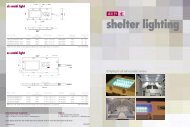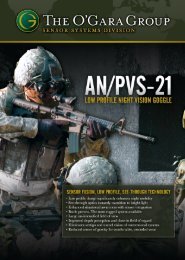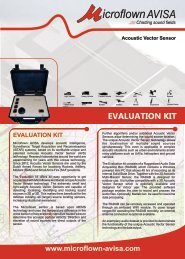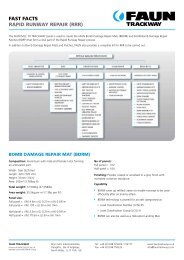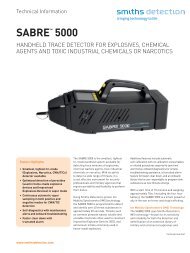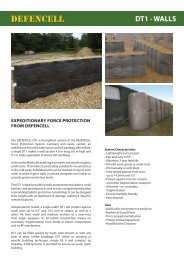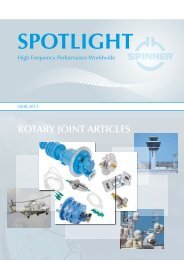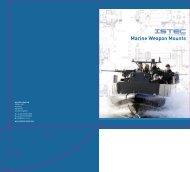Catalog 300 - Kaydon Bearings
Catalog 300 - Kaydon Bearings
Catalog 300 - Kaydon Bearings
You also want an ePaper? Increase the reach of your titles
YUMPU automatically turns print PDFs into web optimized ePapers that Google loves.
REALI-SLIM ® <strong>Bearings</strong> <strong>Catalog</strong> <strong>300</strong> ©KAYDON ® Corporation Issue 10<br />
Mounting (continued)<br />
Section 3–Applications Engineering<br />
Regarding bearing deflection, questions as to bearing<br />
spring rate (ratio of load to deflection) are common. To<br />
answer them, the nature and magnitude of the load must<br />
be considered. Deflection can occur in three modes: axial,<br />
radial, and angular, corresponding to the three types of<br />
loads. Therefore, there are three types of spring rates.<br />
Moreover, deflection in a ball bearing is non-linear and<br />
thus the spring rate is not constant. Typical load vs.<br />
deflection curves are shown in Figure 3-21.<br />
Figure 3-21<br />
Tilt of Axis (radians)<br />
0.0016<br />
0.0014<br />
0.0012<br />
0.0010<br />
0.0008<br />
0.0006<br />
0.0004<br />
0.0002<br />
0.0000<br />
0<br />
KA025XPO Moment Deflection<br />
No Preload<br />
.0005" Preload<br />
Relief Load<br />
100 200 <strong>300</strong> 400<br />
Moment Load (inch-pounds)<br />
Use KAYDON REALI-DESIGN software to generate<br />
graphics illustrating the effect of shaft and housing fits<br />
for all REALI-SLIM ® standard bearings.<br />
Deflection data for the three bearing types is shown<br />
on pages 104 through 109.<br />
Deflection (the amount of movement associated with<br />
compression or stretching of bearing components when<br />
placed under load) varies from one type to another<br />
within a given series as a function of the contact angle<br />
and the number of balls. Conrad assembled bearings (C<br />
and X types) will exhibit greater deflection than those<br />
assembled by “loading notch” or than a Type A bearing<br />
since C and X types have fewer balls. When two<br />
bearings are spaced apart to support a moment load,<br />
the space between the bearings is most important<br />
when considering angular deflection (tilt-of-axis).<br />
Preloading is also a significant factor in reducing<br />
deflection, as shown in the load-deflection curve. In<br />
Figure 3-21 it can be seen that a deflection is non-linear<br />
for the non-preloaded bearing. In addition, the rate of<br />
deflection is higher for lower loads than higher loads.<br />
76 | www.kaydonbearings.com 1-800-514-3066<br />
Deflection for the preloaded bearings is linear up to the<br />
point of preload relief. For loads that exceed the preload<br />
relief, the subsequent deflection follows the same slope<br />
as the non-preloaded curve but at a reduced rate.<br />
Thus if preload is used, the deflection due to the work<br />
load will be markedly less whether preload is relieved<br />
or not.<br />
The Type A bearing is more tolerant of preload than is the<br />
Type X bearing. If maximum stiffness is required and speed<br />
of rotation is significant, Type A bearings are preferred.<br />
Bearing precision, which influences accuracy, is<br />
independent of bearing type. Radial and axial runout,<br />
bore and O.D. tolerances, etc., are essentially the same<br />
for Types C, A, and X bearings of a given precision class.<br />
KAYDON offers:<br />
• a breadth of products.<br />
• a wide range of options.<br />
• additional information on our bearings through<br />
<strong>Kaydon</strong> Engineering.<br />
KAYDON software for<br />
REALI-SLIM ® bearings<br />
available at:<br />
www.kaydonbearings.com



